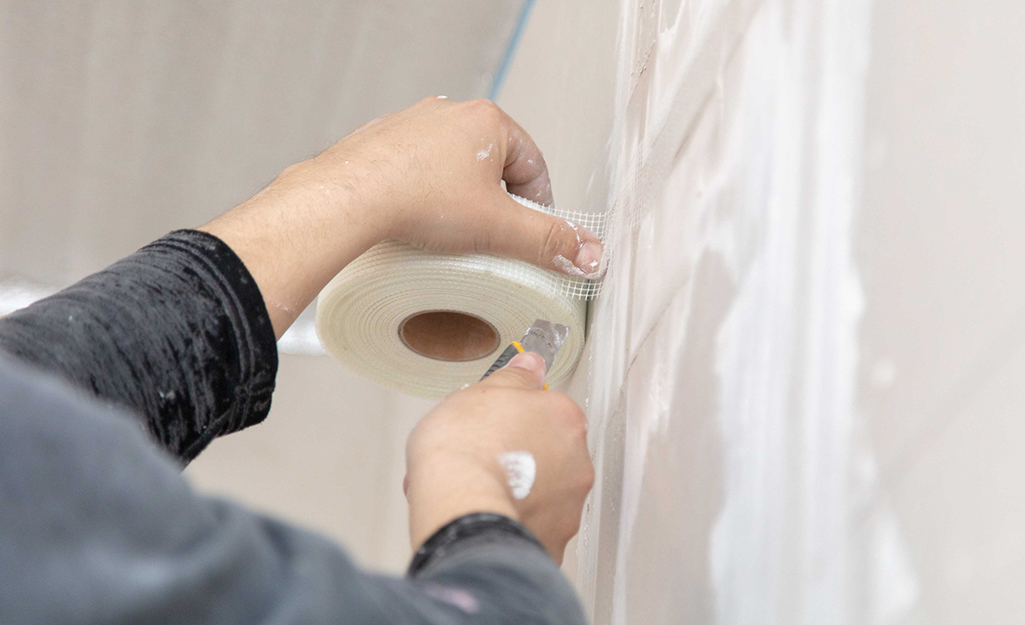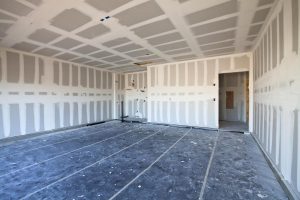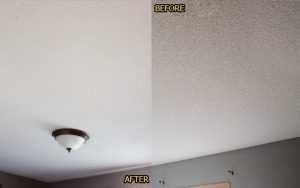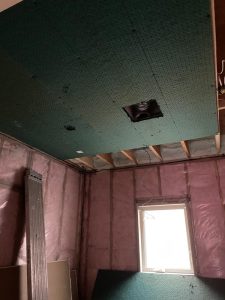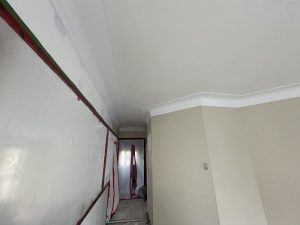Key Components:
Taping:
Drywall joints and seams are susceptible to cracking and shifting over time, making proper taping crucial. There are two primary types of tape used in drywall installation: paper tape and fiberglass mesh tape.Paper Tape: Affordable and versatile, paper tape is commonly used for its ease of application. It is suitable for both flat seams and inside corners. Discuss the benefits and best applications for paper tape.
Fiberglass Mesh Tape: Self-adhesive and ideal for reinforcing corners, fiberglass mesh tape is another popular option. Explore its advantages and recommend situations where it excels.
The application of tape is a critical step in creating a durable joint. After cleaning the joint, a thin layer of joint compound is applied, and the tape is embedded using a drywall knife. Explain the importance of proper tape embedding to prevent future cracks and ensure a strong bond.
Types of Joint Compound (Mud):
Joint compound, or “mud,” is a key element in achieving a smooth and polished finish on drywall. There are two main types: ready-mix and setting-type compounds.Ready-Mix: Pre-mixed and ready to use, this compound is convenient for most applications. Discuss its advantages and ideal use cases.
Setting-Type Compound: This compound hardens through a chemical reaction and is suitable for quick-drying and challenging conditions. Explore its benefits and recommend scenarios where it is the preferred choice.
Provide practical advice on choosing the right joint compound based on factors such as drying time, workability, and sandability. Empower readers to make informed decisions about the materials they use in their projects.
Mudding Techniques:
The mudding process involves applying joint compound to seams, corners, and screw indentations. This process typically requires multiple coats, each building upon the last to create a smooth and seamless finish.Break down the mudding process into coats, emphasizing the importance of thin and even applications. The first coat, known as the “bedding coat,” fills the gaps between the tape and the drywall. Subsequent coats, often referred to as the “filling coats” or “finish coats,” are applied to feather the edges and create a gradual transition between the joint and the surrounding drywall.
Discuss the different types of knives used in the mudding process, such as taping knives and joint knives, and their specific roles in achieving a professional finish. Highlight the importance of proper technique, including holding the knife at the right angle and applying consistent pressure.
Sanding and Smoothing:
Sanding is a critical step in achieving a smooth and professional finish. Between each coat of joint compound, sanding is necessary to eliminate imperfections and create a uniform surface.Explain the techniques for minimizing dust during sanding, such as using a fine-grit sanding sponge or employing a vacuum sander with a dust collector. Discuss the importance of patience during the sanding process and provide guidance on selecting the right grit sandpaper.
Address the potential challenges associated with sanding and how to overcome them. By providing insights into this aspect of the process, readers can approach sanding with confidence and achieve the desired level of smoothness.
Dealing with Problem Areas:
Despite careful execution, drywall installations may encounter challenges such as bubbles, wrinkles, or lifted tape. In this section, address these common issues and provide practical solutions to troubleshoot and rectify them.For instance, if bubbles appear beneath the tape, explain how to carefully cut the bubble, apply additional joint compound, and smooth the area to ensure a seamless finish. By addressing these common problems, readers will feel more equipped to handle unexpected issues that may arise during the taping and mudding process.
Pro Tips and Tricks:
Drying Time Management:
Managing drying time is a crucial aspect of the taping and mudding process. Discuss the factors that influence drying time, such as temperature and humidity, and provide tips on how to expedite the drying process without compromising the quality of the finish.Advise readers to resist the temptation to rush through the drying stages, as this can lead to compromised joints and a less-than-ideal finish. Emphasize the importance of allowing each coat to dry thoroughly before proceeding to the next step.
Provide insights into accelerated drying techniques, such as using fans or heaters in well-ventilated spaces. Stress the need for a balanced approach that ensures both efficiency and quality.
Quality Tools for the Job:
High-quality tools are essential for achieving a professional finish in drywall installation. Discuss the various tools used in the taping and mudding process, including taping knives, joint knives, and mud pans. Provide recommendations for reputable brands and stress the significance of investing in durable and reliable tools.Additionally, offer insights into the proper care and maintenance of these tools, such as cleaning them thoroughly after each use and storing them in a dry environment. A well-maintained toolkit contributes to the efficiency and effectiveness of the drywall finishing process.
Encourage readers to consider the ergonomic design of tools, as comfortable and user-friendly tools can enhance the overall experience and reduce fatigue during extended periods of mudding.
Texturing Techniques:
While a smooth finish is a popular choice for many interiors, some projects may call for textured walls. Touch on various texturing options, from smooth finishes to popular textures like orange peel or knockdown.Explain the techniques for achieving different textures using specialized tools or methods. Whether a reader is aiming for a classic textured look or a modern smooth finish, providing guidance on texturing expands the scope of the guide and caters to a broader audience.
Discuss the considerations involved in selecting the right texture for a particular space, taking into account factors such as lighting, room size, and personal preferences. By offering a comprehensive overview of texturing techniques, readers can confidently choose the finish that aligns with their aesthetic goals.
In conclusion, mastering the art of taping and mudding is integral to achieving a flawless drywall finish that stands the test of time. The attention to detail during these critical stages contributes not only to the aesthetic appeal of the walls but also to their durability and resilience.
Whether readers are seasoned professionals or DIY enthusiasts, this comprehensive guide serves as a roadmap for navigating the complexities of taping and mudding. By understanding the nuances of each step, from selecting the right tape and joint compound to implementing effective mudding techniques, individuals can approach drywall installation with confidence and skill.
The journey from raw drywall panels to a beautifully finished surface involves a combination of knowledge, technique, and patience. As readers embark on their drywall projects, armed with the insights provided in this guide, they can take pride in creating spaces that are not only visually appealing but also crafted with precision and expertise.
Drywall installation becomes not just a construction task but a form of artistry, where each layer contributes to the creation of a polished and professional space. This guide empowers readers to elevate their drywall skills, turning a seemingly routine task into a fulfilling and rewarding endeavor. With the right knowledge and techniques, the transformative power of taping and mudding can be harnessed to craft interiors that stand as testaments to craftsmanship and attention to detail.

